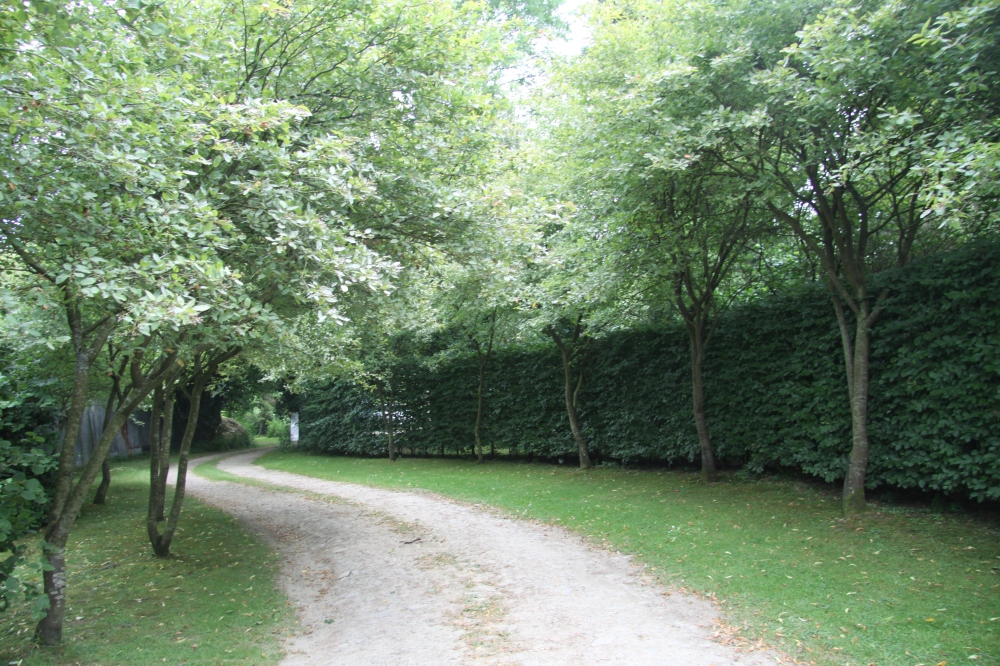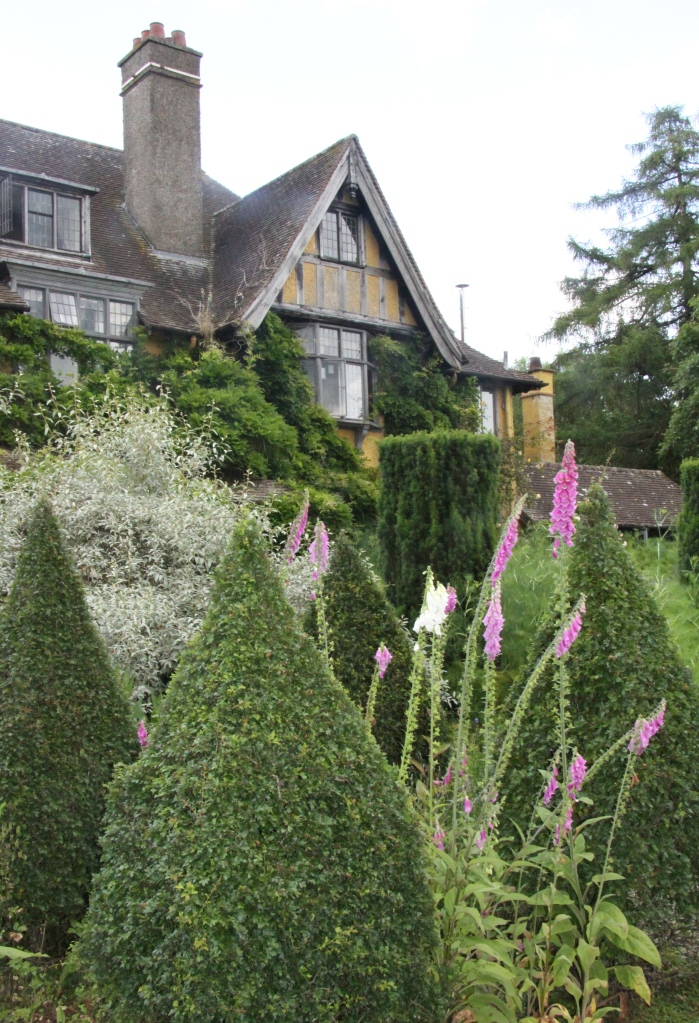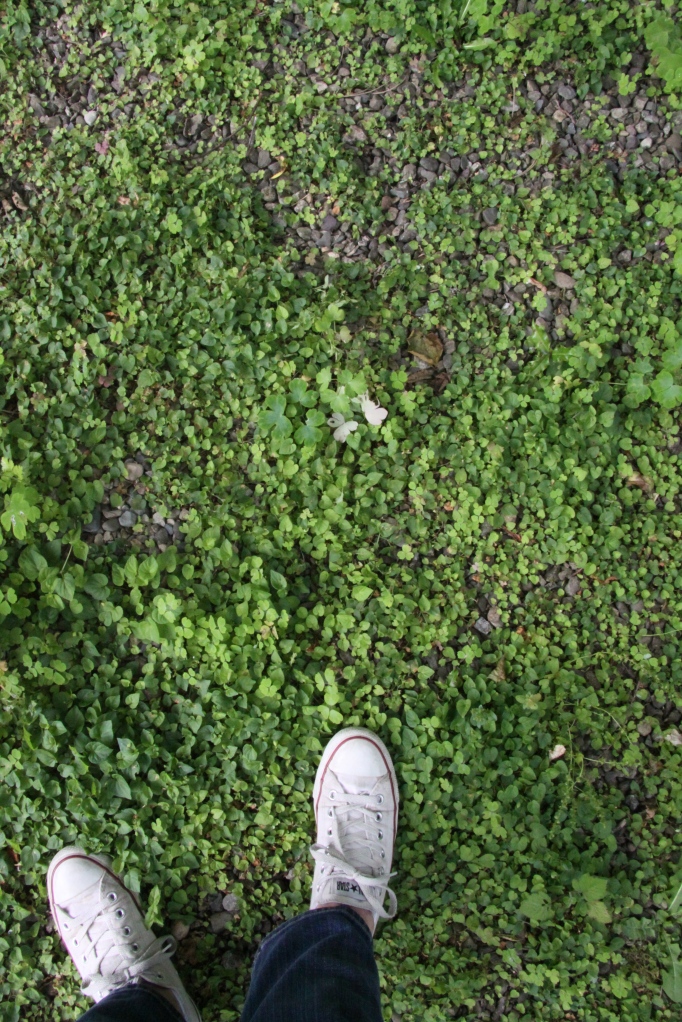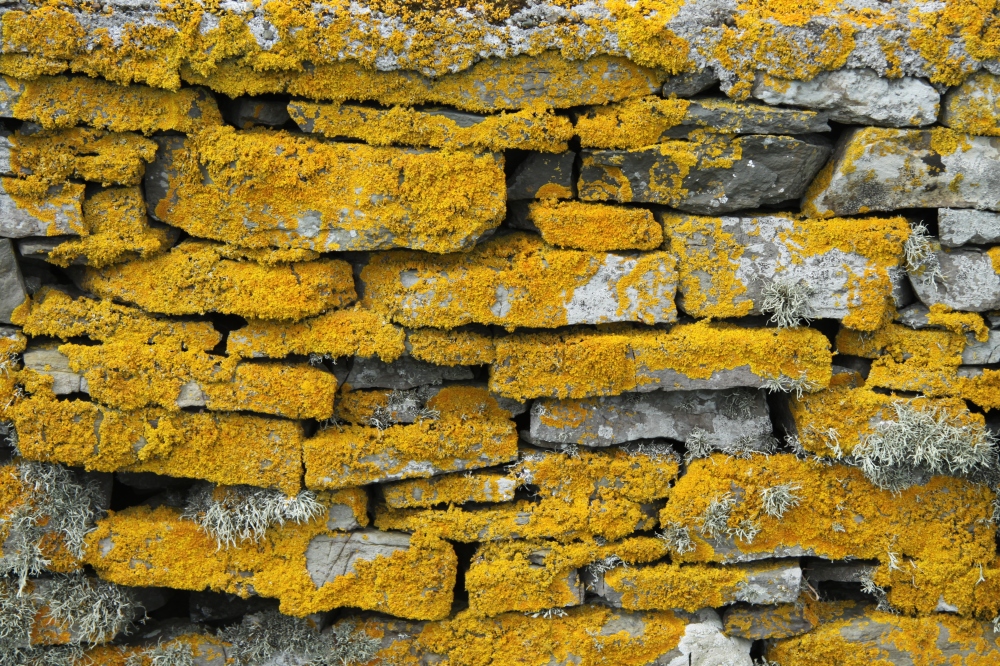REVISITING A FAVOURITE ROMANTIC GARDEN IN MIDSUMMER – HAVE WE MISSED THE LATE SPRING MAGIC?
 I have just returned from a works outing (well an end of project trip with my garden design partner, Helen ) to the Welsh Marches. Top of our list of gardens to visit was a return to Bryan’s Ground near Presteigne in Herefordshire – three acres of intimate garden rooms and arboretum around a yellow painted 1912 Arts and Crafts House. The garden at Bryan’s Ground has been developed for the last twenty years by David Wheeler (publisher of the distinguished gardening quarterly, Hortus ) and artist and garden designer, Simon Dorrell.
I have just returned from a works outing (well an end of project trip with my garden design partner, Helen ) to the Welsh Marches. Top of our list of gardens to visit was a return to Bryan’s Ground near Presteigne in Herefordshire – three acres of intimate garden rooms and arboretum around a yellow painted 1912 Arts and Crafts House. The garden at Bryan’s Ground has been developed for the last twenty years by David Wheeler (publisher of the distinguished gardening quarterly, Hortus ) and artist and garden designer, Simon Dorrell.
The approach to Bryan’s Ground is elegant but initially subdued – a slightly after the party feeling. The Amelanchier leading to the ‘Parking for Motors’ is in its most restrained phase – post blossom and bronze leaf and pre autumn fire:
The Amelanchier lamarkii lined drive – in its quietest phase
The front of the house, cloaked in Hydrangia petiolaris, and protected by solemn heavyweight sentries of giant, shaggy Prunus lusitanica, is looking shadowy and ripe almost for a the opening of a darker fairy tale:
And the famous grid of 25 different apple tree which emerge from mown paths, each tree surrounded by a private sea of blue anemone, followed by Pheasant’s Eye narcissus, followed by show-stoppingly dense planting of the slender, pale blue Iris sibirica ‘Perry’s Blue’ – is now quietly lush.
Drifts of Iris sibirica ‘Papillon’ – image from patient gardener.wordpress.com
 But it does not take long to warm us up. Looking more closely, the planting around the apple trees is now laced with pale pink field geraniums and softly fluttering tall grasses are now taking over as quieter, paler stars amongst the stiffer stems of the flowered iris.
But it does not take long to warm us up. Looking more closely, the planting around the apple trees is now laced with pale pink field geraniums and softly fluttering tall grasses are now taking over as quieter, paler stars amongst the stiffer stems of the flowered iris.
There is a handsome new entrance archway to frame the arrival to the house via the orchard :
Entrance into the front garden at Bryan’s Ground
The archway has been built, beautifully, sturdily in the same handsome Dutch/Herefordshire vernacular as the ‘dovecote’ which lures you to enter the main part of the garden.
The Dovecote
The Dovecote has it all – which is when you remember why this is a garden of inspirational confidence and charm. It is a focal point from and axis into three sides of the garden – each with its own flavour – and what is most covetable, perhaps, is that on the first floor there is a small dining room with idyllic views onto the Welsh Marches beyond.
The dovecote takes you through to a parade of formal topiary (albeit sweetly coexistng with leggy pink geraniums which lounge about freely throughout the garden) and acts as a handsome backdrop to the dense green of the yew and the softly planted steps – about to be set ablaze by Crocosmia

 The steps here are about to be set ablaze by Crocosmia
The steps here are about to be set ablaze by Crocosmia
And then you are finally let loose into the principal ‘Sunk Garden’
The Sunk Garden
For a moment I look back to see the dovecote nestling happily in stands of campanula and draped in roses. No need to worry about missing the iris moment – which is brilliant and absolutely worth making a pilgrimage to see – the new midsummer fairy tale version of Bryan’s Ground is just unfolding.
 The Dovecote with roses and Campanula
The Dovecote with roses and Campanula
And I have two new loves in my life: the statuesque pointiness of fresh green teasel (Dipsacus fullonum):
Self seeded teasel and foxgloves against topiary hawthorn
– and the endlessly forgiving romantic haze of quantities of green fennel:
The Dovecote nestling in a haze of topiary and fennel

fennel, teasel and lavender
 Green Fennel, Stachys byzantina and daisies
Green Fennel, Stachys byzantina and daisies
The wild self-seeding generosity of these two plants works so well, of course, because of the the dark solidity of the topiary it is dancing between:
Green fennel dancing between structural forms of hebe and yew
Every so often there are joyous rockets of super high foxgloves in the mix:
And throughout the garden the silvery, deliciously scented shrub Elaeagnus ‘Quicksilver’ is planted to add contrast and a shimmering brightness to the palette of greens:
Elaeagnus ‘Quicksilver’
In one corner of the Sunk Garden there is a wonderful rather medieval monster-head wall of yew with a wonky sliver of an entrance to tempt you furhter in:
Above all this is the generous loggia where you can sit and eat spiced apple cake and idly imagine for a moment that this is your own. The path back to the Dovecote is splendidly narrow with overspilling plants: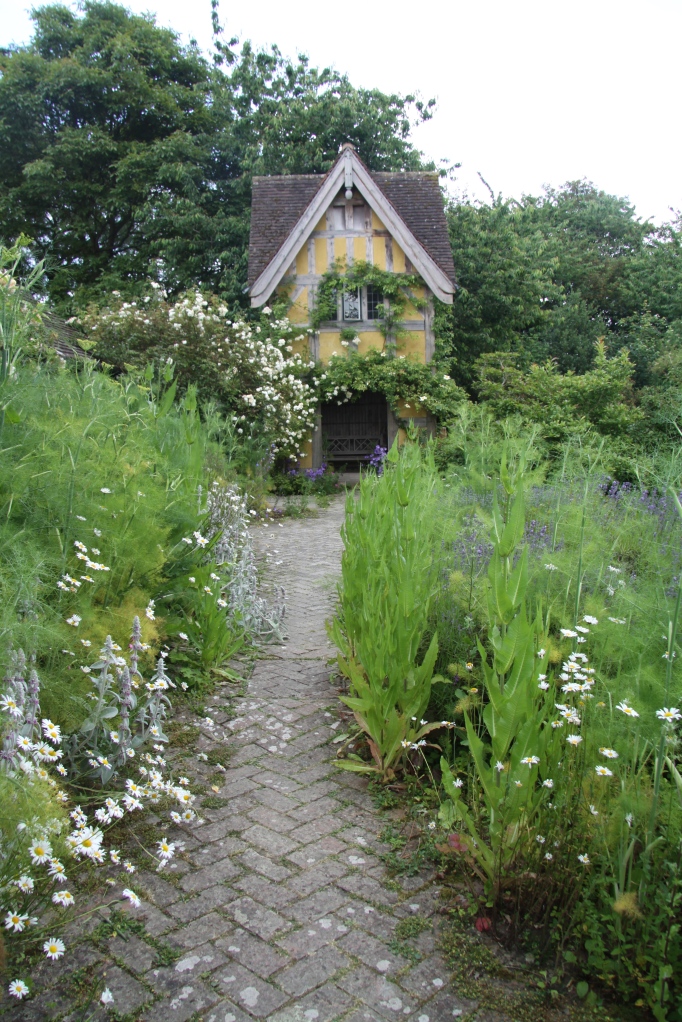
Or you might choose to have your tea under a voluptuous swoop of pineapple broom (Cytisus battandieri) whose vivid yellow flowers are almost intoxicatingly pineapple scented:
Bench under gorgeous headily scented pineapple broom
And then the garden is calm again. Lime Alley on June 23rd 2014 is a shaded walk flanked by a quietly frothing carpet of Alchemilla mollis:
Lime Alley
In the spring, Lime Alley is singing with orange tulips, acid yellow Euphorbia polychrome and rich yellow azaleas but now it is calm and ordered, a perfectly judged break between the exhilarating Sunk Garden and the other midsummer rooms to come.
What really impresses me as I move around the garden is the simplicity of the planting – large quantities of astrantia and Geranium psilostemon:
Geranium psilostemon and astrantia
 knautia macedonica and pink geranium
knautia macedonica and pink geranium
There are lovely walks through shades of pink with classic columns of yew for structure:
– And yet there is a constant supply of surprise and invention too.
There are sudden bursts of a new colour to keep you on your toes:
Aconitum and Cotinus amongst the pinks
Angelica gigas and Cotinus
A gently shabby archway of recycled materials adds a layer of quirky grandeur to the cottage garden planting:
Archway of recycled materials
And then as you turn the corner, the palette changes completely. FIrst to rich dusky blues and purples:
And round again to a corridor of pale yellows and silver
 Phlomis russeliana a key plant in this corridor of yellow and silver
Phlomis russeliana a key plant in this corridor of yellow and silver
There is the cool quiet of the Canal:
 The Canal
The Canal
and the wonderful formal garden with pool – first glimpsed tantalisingly, of course, through an opening in a hedge:
Pond glimpsed through hedge opening
Again we have missed the further swathes of Iris sibirica and what must have been a delicate knee-high forest of aquilegia in May. But the scene, here immaculately framed by a stilted hornbeam hedge and viewed from a perfectly place bench, is wonderfully restful.
 The pond seen through the elegant limbs of a stilted hornbeam hedge
The pond seen through the elegant limbs of a stilted hornbeam hedge
I love the license a plant has to self seed in this garden:
carpet of Aquilegia seedlings under stilted hornbeam hedge
As we move away from the garden and enter the Cricket Wood – a still growing collection of specimen trees and shrubs started in 2000 – we are aware again of the intensity of a particular moment in an area of planting. In early spring there are hundreds of bulbs in the woodland, later scented walks of viburnums and the fragrant yellow azalea, Rhododendron luteum and many of the trees are specially selected for the strength of their autumn colour. But for now the palette is subtle and beginning to fade and bleach into high summer.
The transition from garden to woodland is marked by a lovely tree-fringed area dominated by a stunningly beautiful Cornus tree – I think it is ‘Norman Hadden – with pink tinged white bracts. The Cornus is underplanted with swathes of palest pink astrantia and dashes of richer pink Martagon lily:

Cornus – probably ‘Norman Hadden’  Generous swathes of palest pink astrantia in dappled shade
Generous swathes of palest pink astrantia in dappled shade
Within the wood itself there is a perfect tin-roofed house which looks increasingly fit for a fairytale the further you wander away from it and deeper into the woods:
The long softly planted avenues will take you to treasures such as a fine crumple-leaved medlar:
a gorgeous Cornus kousa var. chinensis:
and a cloud of light-catching bronze cotinus amongst its towering silvery neighbours:
Much grown since the last time we visited is The Mezquita – a grid of bird cherry trees (Prunus avium) inspired by the onyx and marble columns of the the Mezquita in Cordoba. This had looked rather stiff and organised when we visited a few years ago but it is now a wonderful sturdy forest of slim-trunked trees which frame the view in every direction and offers a delightful place to sit:
ripening fruit of the Bird Cherry
The planting around Strongacre Pool at the edge of the Cricket Wood is particularly lovely. Papery pale and delicate with a boathouse to add to your dreams.
The Cabin at Strongacre Lake The delicate palette of plants at the water’s edge
The delicate palette of plants at the water’s edge
As you walk away from the boat house the little building seems to be floating in a sea of dusky pink grass.
The Cabin at Strongacre Lake
I should not have worried for a moment that missing the irises would mean missing the magic of Bryan’s Ground.

